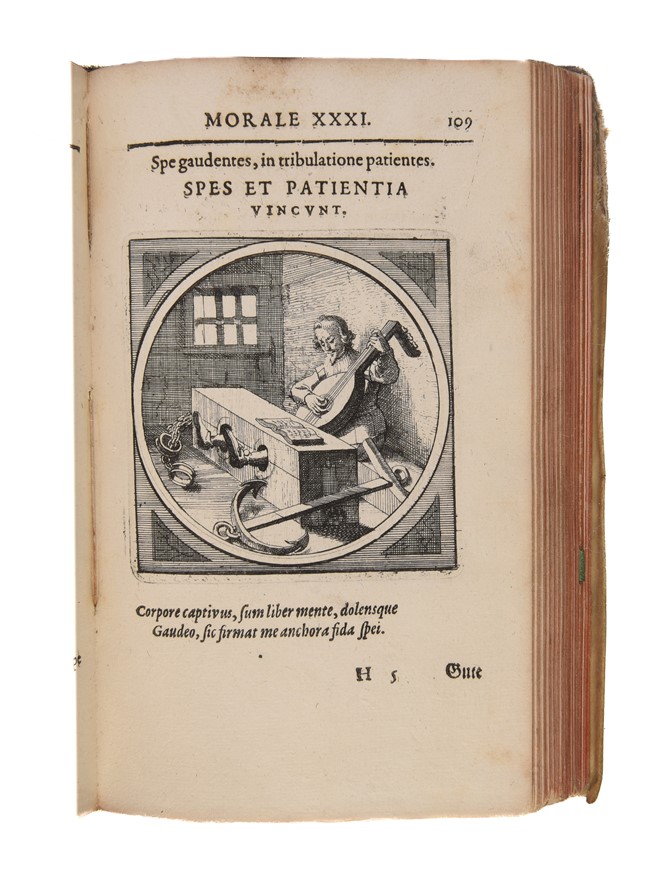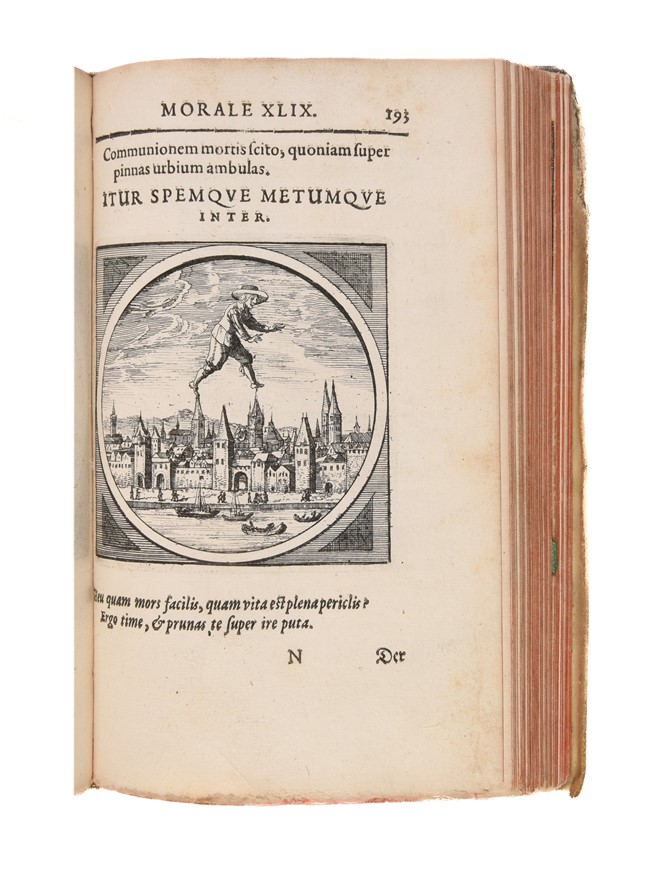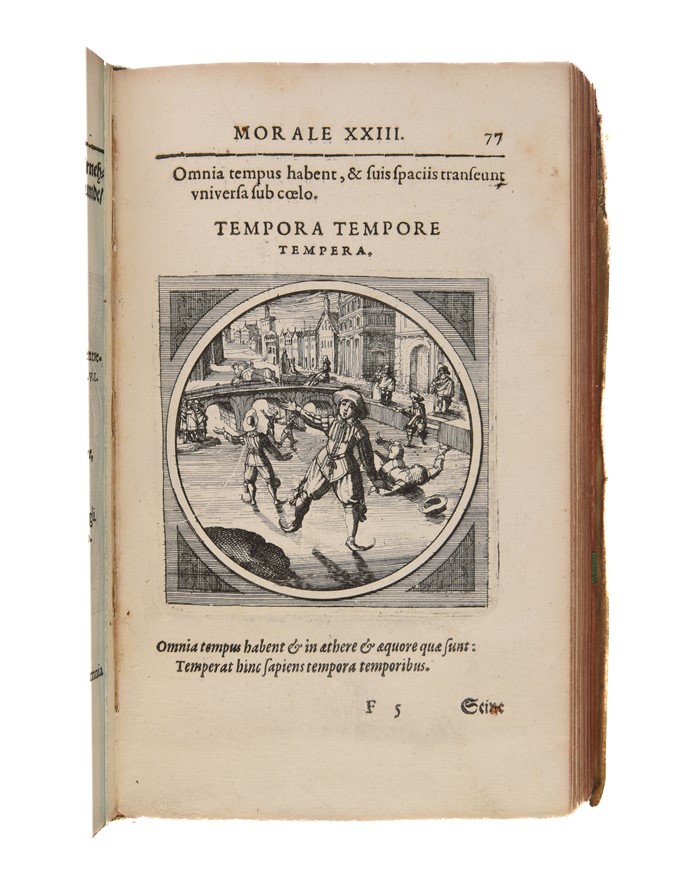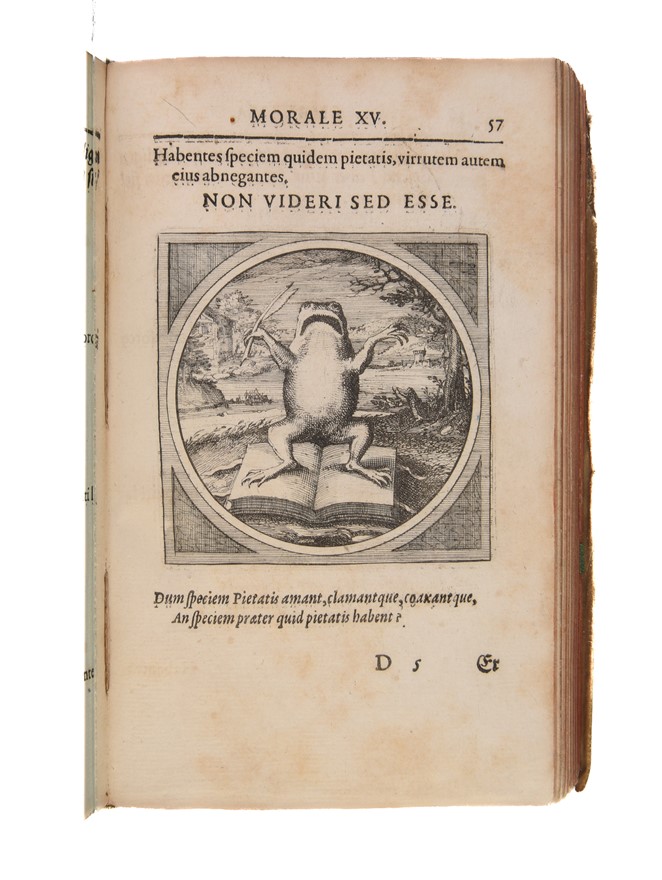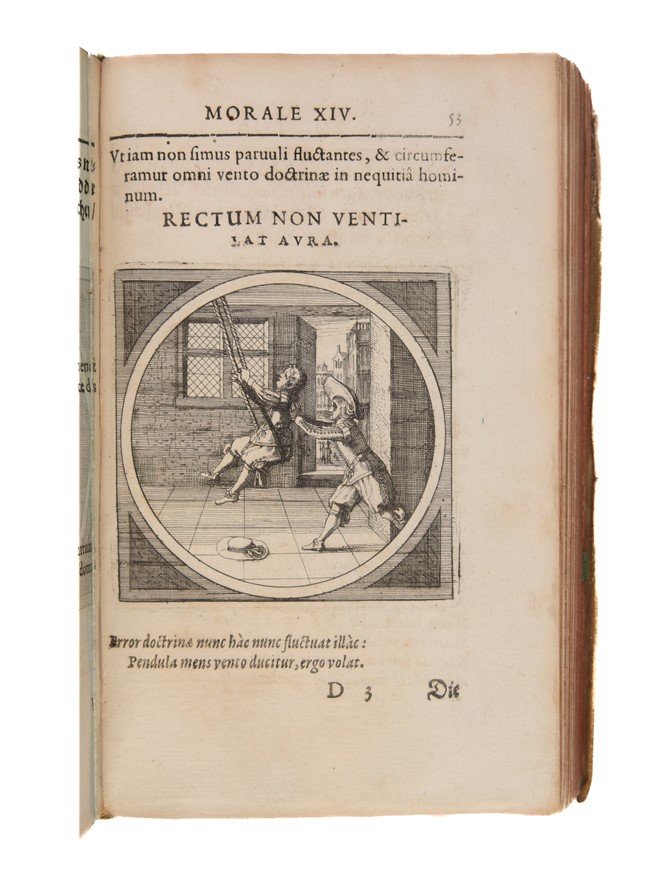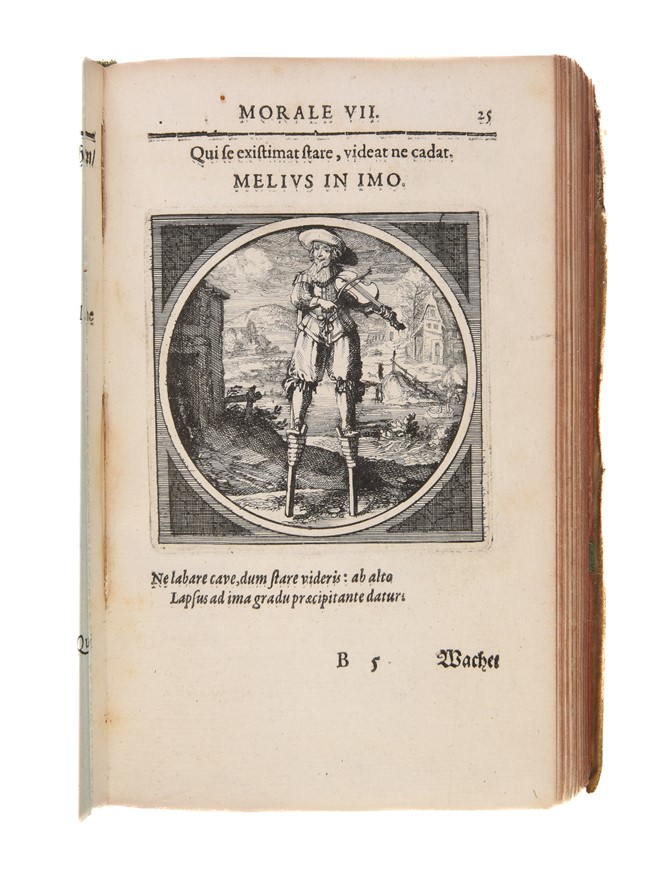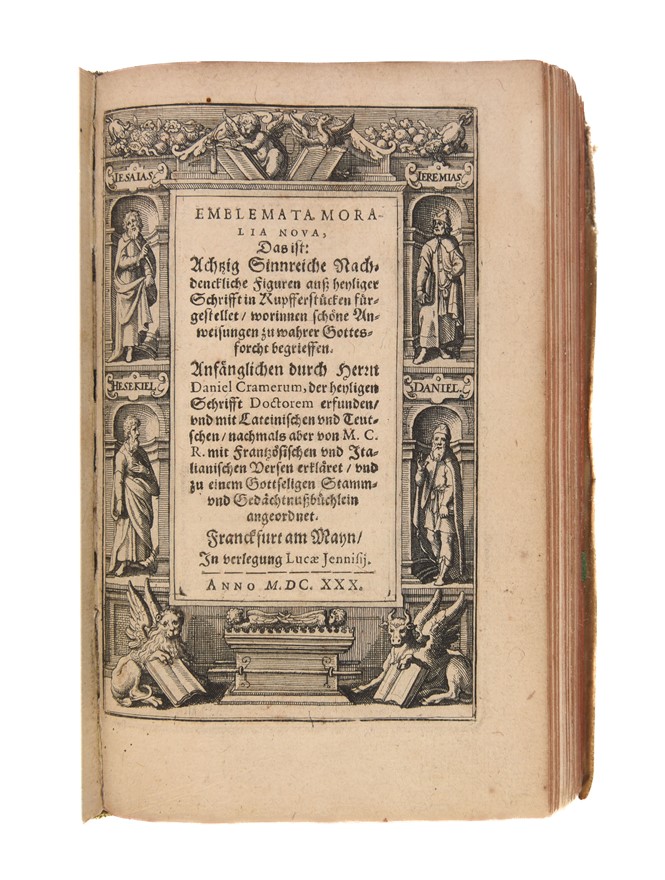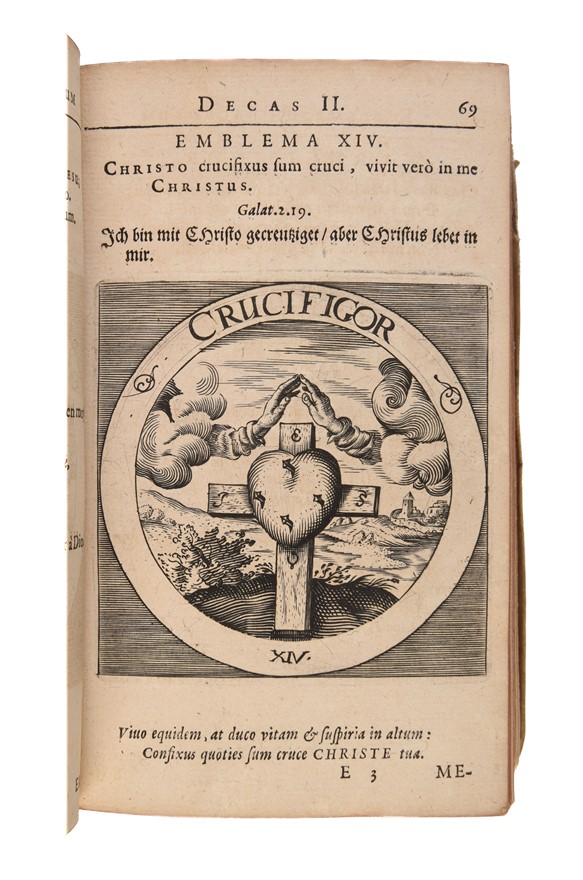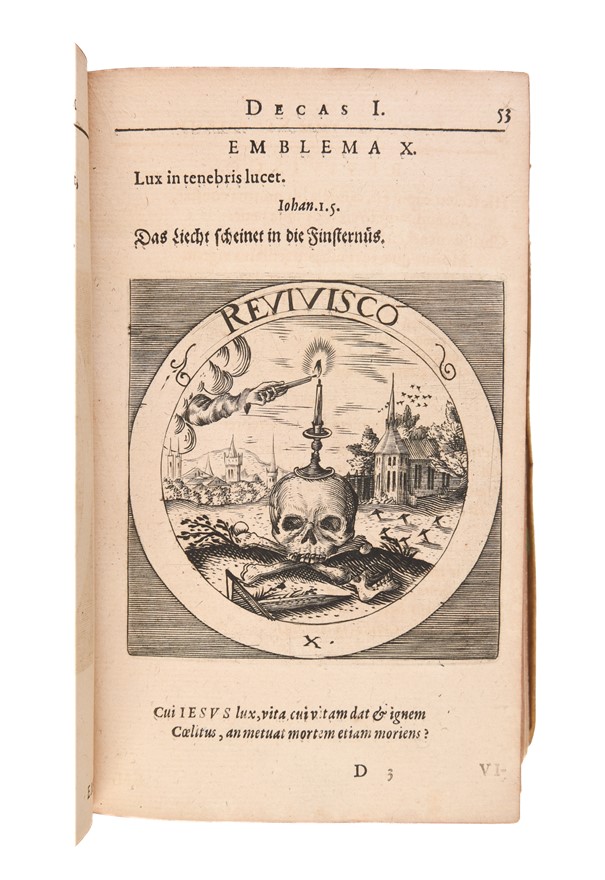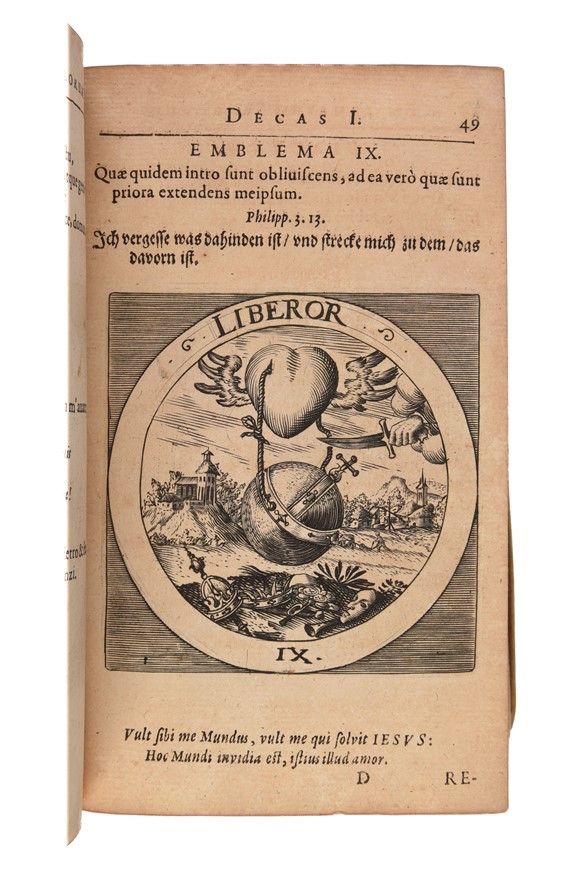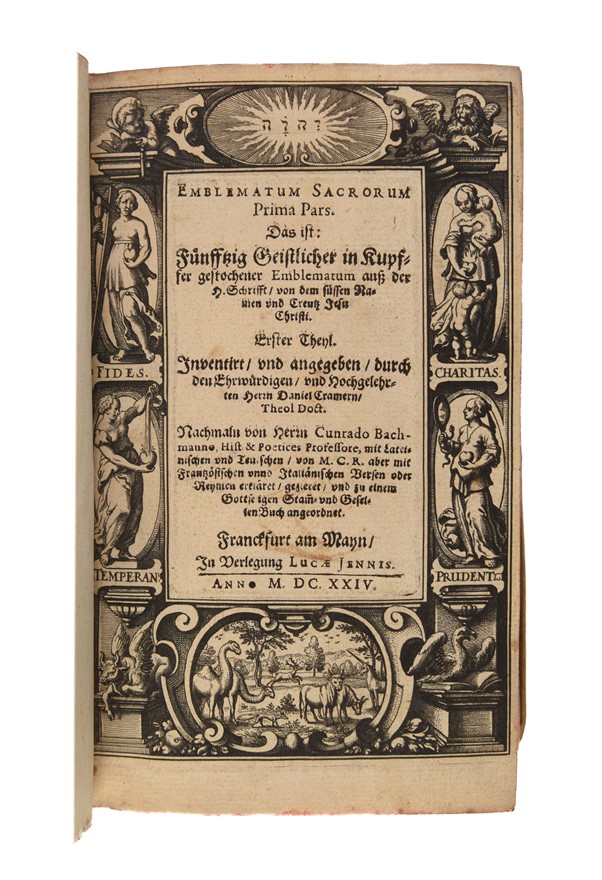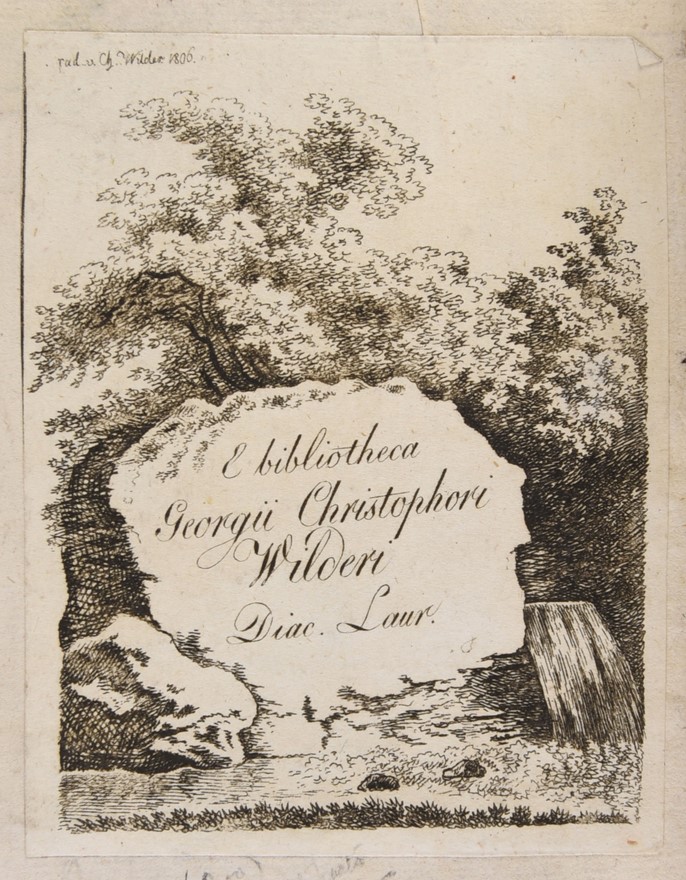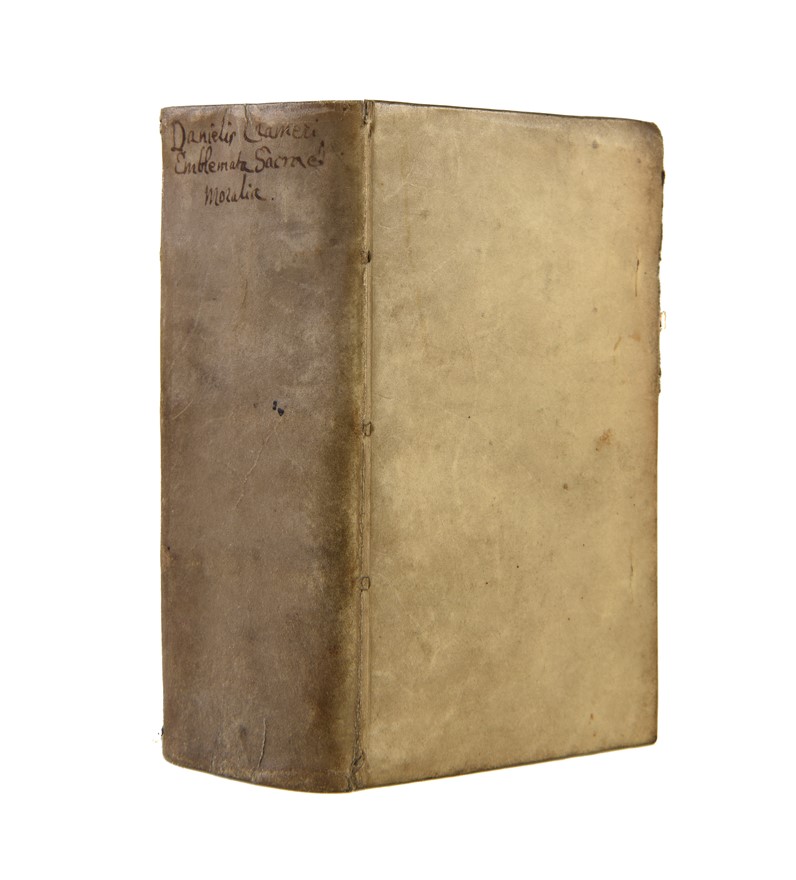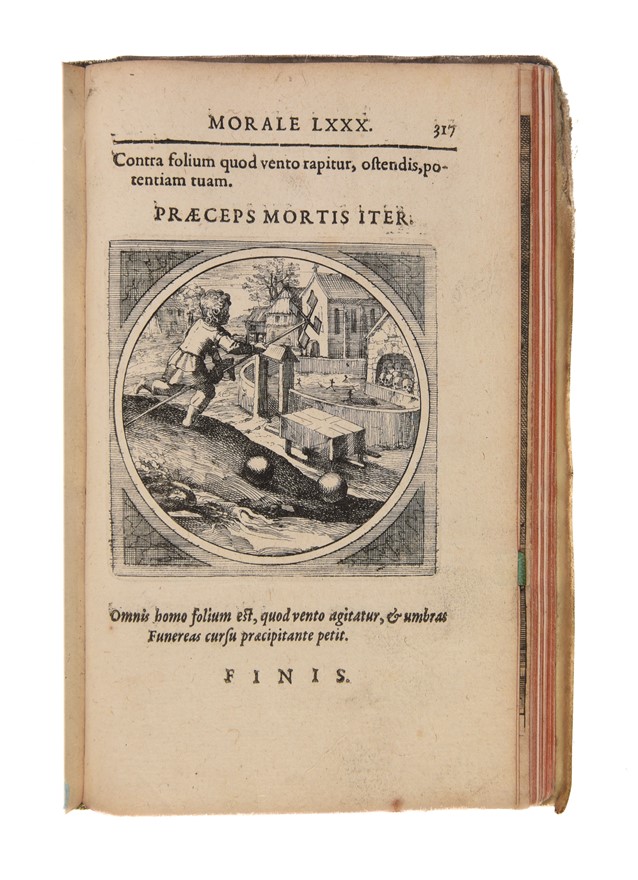Emblemata sacrorum prima pars (- secunda). Das ist: Fünffzig (& Fünffzig) Geistlicher in Kupffer gestochener Emblematum auss der H. Schrifft. Nachmaln von Cunrado Bachmanno, mit Lateinischen und Teutschen, von M.C.R.
CRAMER Daniel; BACHMANN Conrad (1624)
£5500.00
Please contact us in advance if you would like to view this book at our Curzon Street shop.
CRAMER'S LUTHERAN EMBLEMS
I: Two fine engraved title-borders with female figures of the Virtues at each side, and 100 engraved emblems in all, 50 in each part, portrait of Cramer and his emblem at beginning of part two and woodcut printer's device at the end.
(Bound with:) Emblemata moralia nova, Das ist: Achtzig sinnreiche nachdenckliche Figuren auss heyliger Schrifft in Kupferstücken fürgestellet... Anfänglichen mit Lateinischen und Teutschen, nachmals aber von M. C. R. mit Frantzösischen und Italianischen Versen erkläret.
Frankfurt, Lucas Jennis, 1630
Fine engraved title-border with figures of the Prophets at each side and 80 engraved emblems.
(And:) ISSELBURG (Peter). Emblemata politica in aula magna Curiae Noribergensis depicta. (Nuremberg, 1617).
Fine engraved frontispiece with view of Nuremberg, dedicatory plate with coat-of-arms of the Senators, and 32 full-page emblematic plates.
Three works in one volume. 8vo (170 x 100mm). Contemporary vellum, title lettered in ink at head of spine, red edges (ties missing, some wear to edges).
I. First complete polyglot edition, with variant German title and the full 100 emblems, the majority devoted to the heart. Dedicated to Georg von Görtz, Baron of Schlitz, the preliminaries and emblem verses are printed in Latin, German, French and Italian.
Jennis had published a rarely found edition in 1617 with only the first 40 plates and without the polyglot page of explanatory text for each emblem, entitled Societas Iesu et Roseae Crucis Vera, hoc est, Decades quatuor emblematum sacrorum ex Sacra Scriptura, de dulcissimo nomine & cruce Iesu Christi. This earlier publication has been described as "a Rosicrucian item of great interest" (McLean) who further notes "In addition to the heading of the title-page in The True Society of Jesus and the Rosy Cross, there are also a number of internal Rosicrucian references relating the symbols of the rose, the heart, and the cross... it is quite possible that here Cramer was consciously trying to produce a series of spiritual exercises of a Protestant esoteric Christianity". Peter Daly disagrees, however, stating that the emblems "are neither Jesuit nor Rosicrucian. Cramer was a Protestant, a strictly Lutheran pastor, historian and theologian", and that the "mention of the true rosy cross may also be taken as a reference to Luther's arms". A second edition of 1622 expanded the number of plates to 50 and added polyglot verses on the facing page, the present edition provides a second part of a further 50 emblems for the first time.
As with the following work by Cramer (1568-1637), also published by Jennis, after the preliminary material each leaf is printed on one side only. The recto has the Latin text and German translation above and below the illustration and is faced on the opposite page by Bachman's epigrams in Latin, German, French and Italian.
II. First edition, with variant title, of this fascinating polyglot emblem book with the text in Latin, German, French and Italian. The 80 spirited circular emblems, by an unknown artist, are reminiscent of the scenes of daily life found in the Dutch emblem books of the period. Cramer's moral wisdom taken from scripture is illustrated by a wide variety of secular images. For example, as Manning explains, "Cramer applies stilt-walking to 1 Corinthians 10.12: Qui se existimat stare, videat ne cadat ('Wherefore let him that thinketh he standeth take heed least he fall'). His sensible motto is Mellius in imo ('It is better on the ground').
III. First edition of this influential collection of engraved political emblems replicating the frescoes newly created for the Great Hall of the Council of Nuremberg. The work was engraved and published by Peter Iselburg (1580-ca. 1630), with mottoes and verses in Latin attributed to Georg Rem (1561-1625) and was based on the series of allegorical frescoes celebrating civic virtues in the Great Hall. They were conceived as part of an extensive restoration programme in the years around 1620, not only to restore the extraordinary frescoes from Dürer's time, such as his Triumphal Procession, but also to add new paintings, with the emblems found here decorating the window embrasures opposite. As the Great Hall was destroyed during World War II, Iselburg's engravings are our only record of this emblematic scheme. This copy is without 5 leaves of text, the plates are complete.
Provenance: large engraved bookplate of Georg Christoph Wilder (1797-1855), German architectural draughtsman and engraver. Wilder produced the bookplate himself and has signed it 'rad. u Ch. Wilder 1806'.
I. VD 17 32:680688S & 1:078963A. Praz 310. Landwehr, German 215. French Emblem Books F.203. Peter M. Daly, The Emblem in Early Modern Europe (2014), pp. 84-5. Adam McLean, The Rosicrucian Emblems of Daniel Cramer (1991), pp. 7-9. II. VD 17 1:078954B. (variant title). Praz pp. 310/311. Landwehr, German nos. 213/4. French Emblem Books F.204. J. Manning, The Emblem (2002). III. VD 17 23:233402W. Landwehr German, 372.
Stock Code: 249872
